Surfaced OBS Recovered in Azores after 5 months at Sea
In November 2021, we deployed an array of 12 Aquarius ocean-bottom seismometers (OBS) over the Laurentian Fan near the Grand Banks. A few weeks after the deployment cruise, two of the instruments surfaced unexpectedly, with a third OBS surfacing approximately 3 weeks later just before Christmas. Due to the distance offshore and adverse weather conditions typically seen in the North Atlantic in late fall and winter, it wasn't feasible to send a ship to recover the instruments at the time. Instead, we have been tracking their progress drifting across the Atlantic over the last 5 months with daily position updates provided by the Apollo Mono Iridium beacons installed on the OBS.
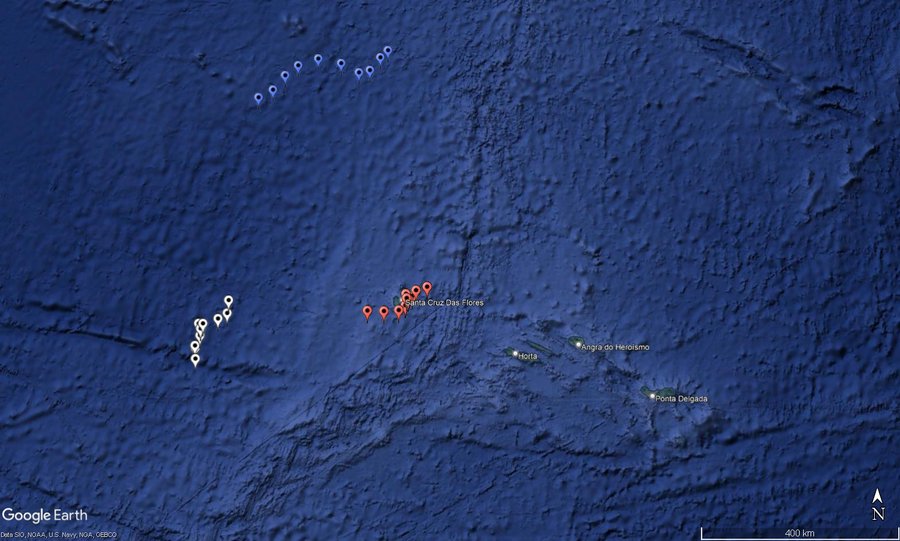
GPS positions of the 3 drifting OBS near the Azores as of May 9th, 2022. The most recent 10 GPS locations (update frequency once per day, April 30 to May 9) are shown for each instrument. Red markers are for AQU-0260 which was recently recovered. The red and blue tracks are moving west to east; the white track is moving north to south over this time period.
It has been slow going (average travel speed is around 0.9 kts), with many loop-backs as they drifted at the whim of countless winter storms, but all three OBS are now near the Mid-Atlantic Ridge. Two are still too far offshore to attempt recovery, but we are very happy to report that one was recently recovered near Flores (the westernmost island of the Azores).
In the first week of May, we noticed that AQU-0260 had approached within 30 kilometres of the island of Flores, and reached out to a few contacts in the area. Luckily, an old colleague of Graeme's, Ana Colaco, is a Principal Scientist with the Okeanos Institute at the Universidade dos Açores. Ana's research director, Gui Menezes, was able to put us in contact with Carlos Souza, the captain of the fishing vessel Pérola da Horta which was planning to transit near the instrument the following day. With hourly position updates from the Apollo beacon, relayed through WhatsApp in Portuguese (thanks Google Translate), Carlos and his crew were able to easily locate the OBS and recover it. As they were not able to bring the instrument on board their small craft, it was secured on a winch on the side of the ship for the transit to Horta. During the transit, Carlos treated us to photos of the island scenery and wildlife, and now we'd all like to visit the Azores to see these beautiful islands firsthand.
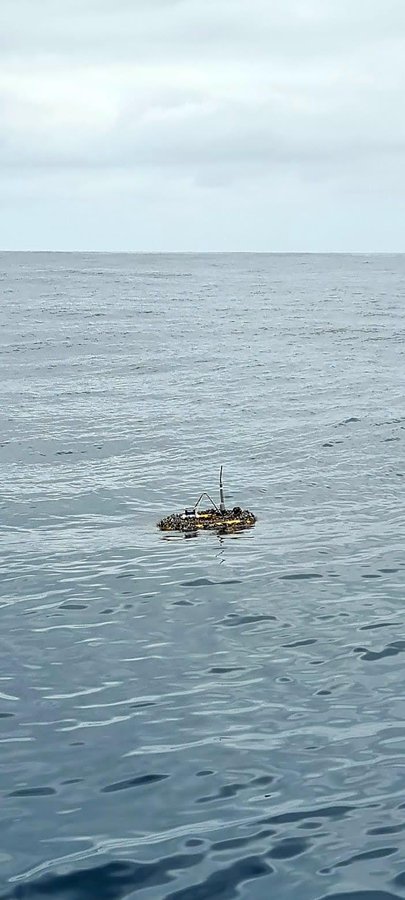
OBS AQU-0260 drifting at surface covered in barnacles.
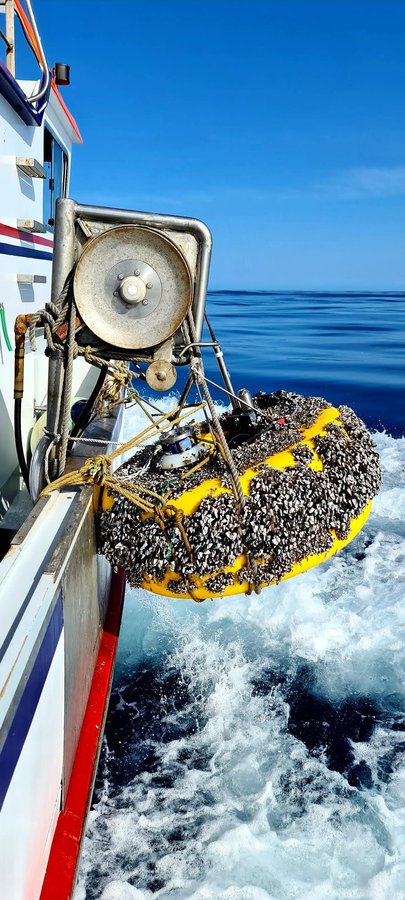
Recovered OBS AQU-0260 secured on the side of the fishing vessel Pérola da Horta.
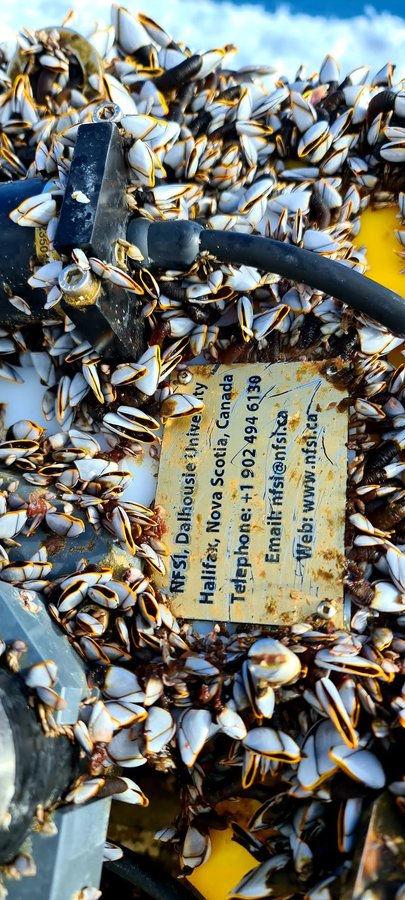
NFSI contact information plate still legible after 5 months drifting at sea.
The OBS was delivered to the Okeanos Institute on Horta. As you can see, it had picked up some passengers during its trans-Atlantic voyage, making it more difficult to spot at a distance. Fortunately, the barnacles were no match for technicians António Godinho, Sérgio Gomez and Renato Bettencourt at Okeanos, who cleaned the instrument up, removed the recovery beacons and found an appropriate storage location until we can arrange shipping back to Güralp in the UK, where the cause of the early release will be investigated.
We were very pleased to see that the plates showing NFSI contact information are still legible after 5 months of drifting. If we lose contact with instruments in the future, anyone who finds them should have all the information they need to reach out to us.
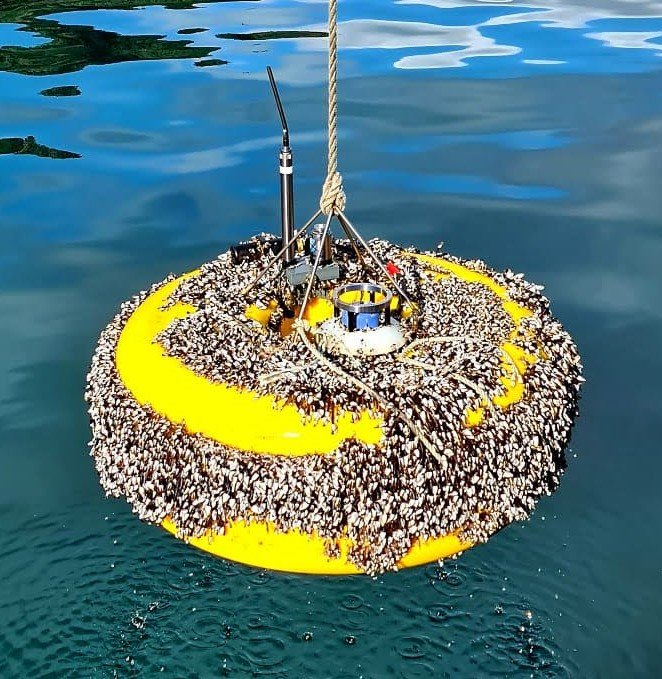
Recovered OBS covered in barnacles after months drifting at sea.
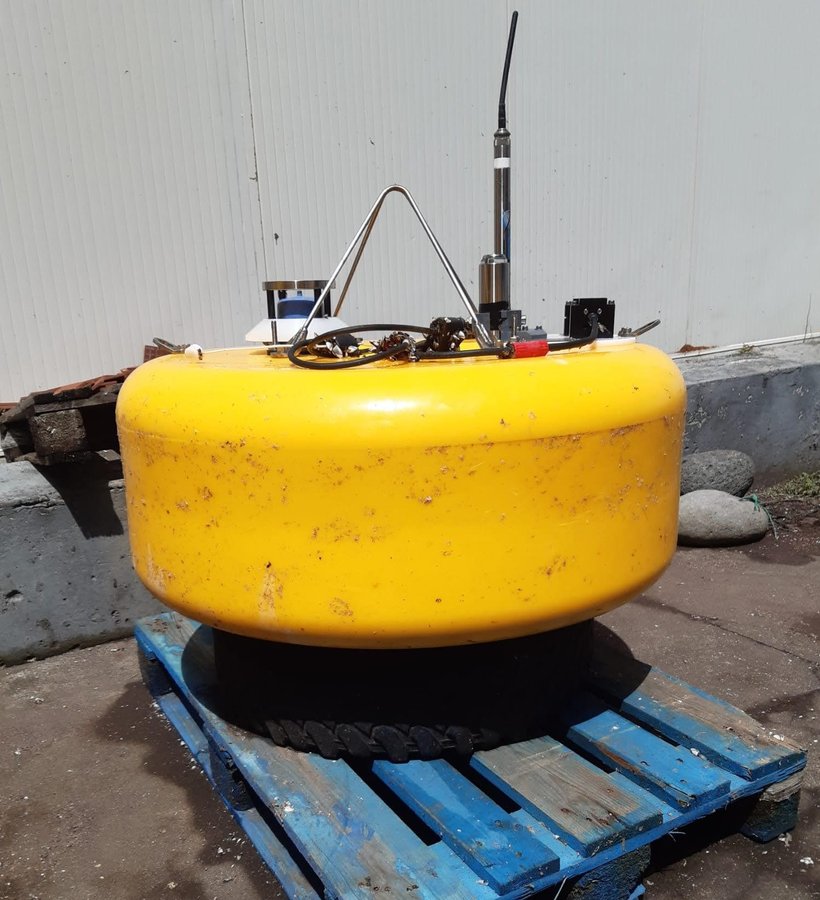
OBS after cleaning off the barnacles, stored on a large tire to prevent scratching the underside of the pressure case.
The electrical connections of the OBS itself have been left untouched to allow Güralp's engineers to investigate why these instruments surfaced. Laboratory tests conducted immediately after the surfacings suggested that a small current leak from the hydrophone supply to the burn-wire could be the cause. Close-up photographs taken by the Okeanos technicians show that the burn-wire on the recovered instrument appears to have been corroded, which supports this hypothesis. In the original Aquarius design, a single cable connecting to the pressure case was split into supply lines for the hydrophone and burn-wire by an underwater cable loom ("octopus" connector, pictured below). Microamps of current leakage between pins in this connector would corrode the wire over the course of a few weeks (as observed for our drifters). Modifications were made to the instruments of Batches 3 and 4, which have been built over the past 5 months since the surfacings, to address this potential issue by separating the wiring for the hydrophone and the burn-wire such that there are now two cable connections on the top of the pressure case. The remaining OBS deployed for the Laurentian Fan project (and any of the drifters that can be recovered) will be retrofitted with the same modifications after recovery.
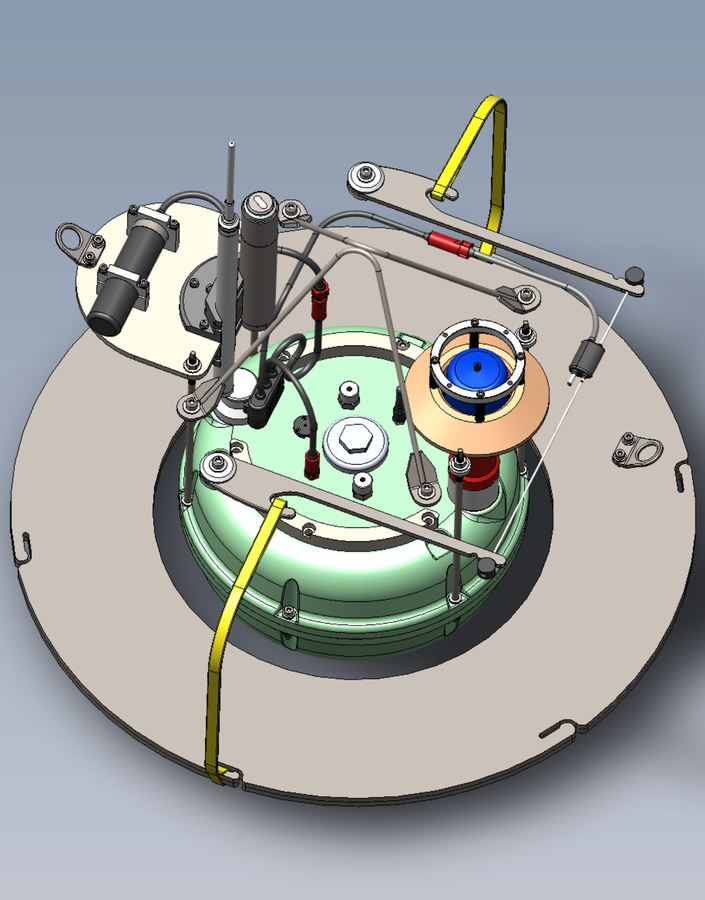
Aquarius design used for Batches 1 and 2 instruments deployed for the Laurentian Fan project, showing the "octopus" connector with a single cable connection to the pressure case.
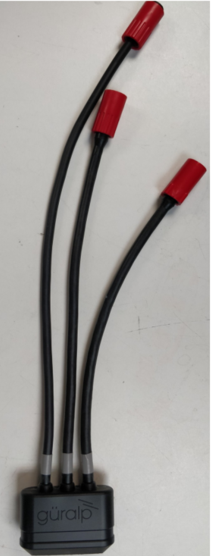
The underwater cable loom ("octopus" connector) used in Batches 1 and 2 of Aquarius OBS delivered to the NFSI.
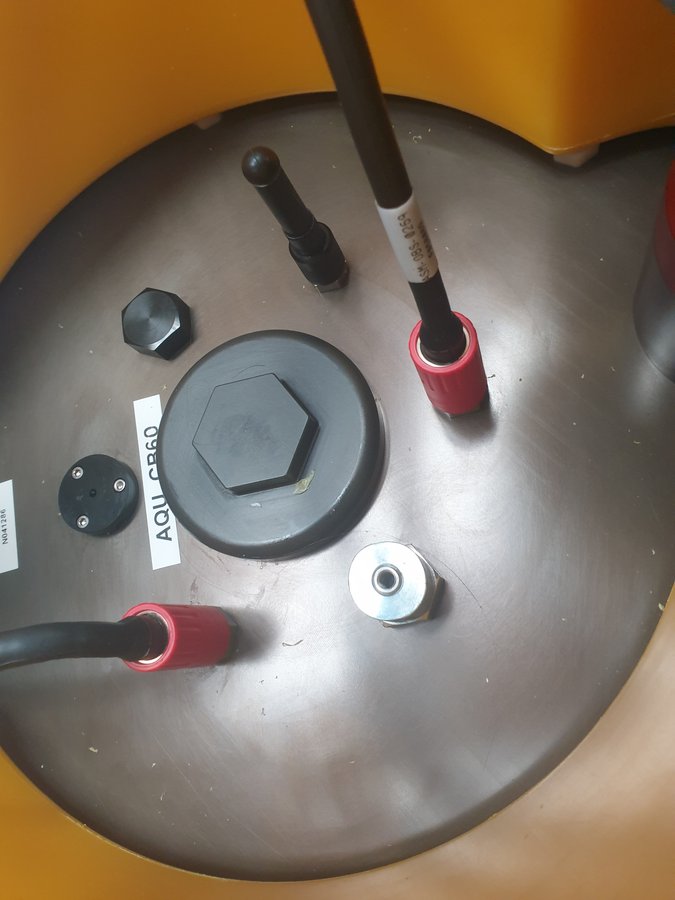
Modified connections on the top of the Aquarius pressure case with the hydrophone and burn-wire cables separate.
Overall, the recovery went very smoothly, and we are relieved and happy that this instrument will eventually rejoin the fleet for (hopefully) many future projects. Our sincerest thanks go out to the crew of the Pérola da Horta and the staff at Okeanos for their help in this operation.
We can only hope the other two drifters will be captured as easily in the coming months. One of these has been hanging around southwest of the Azores and may make its way close enough to the islands to be recovered there as well. The other OBS is well on its way toward the west coast of Europe, and may even end up being recovered from the UK depending on weather patterns over the summer.
Until next time,
Katie and Graeme
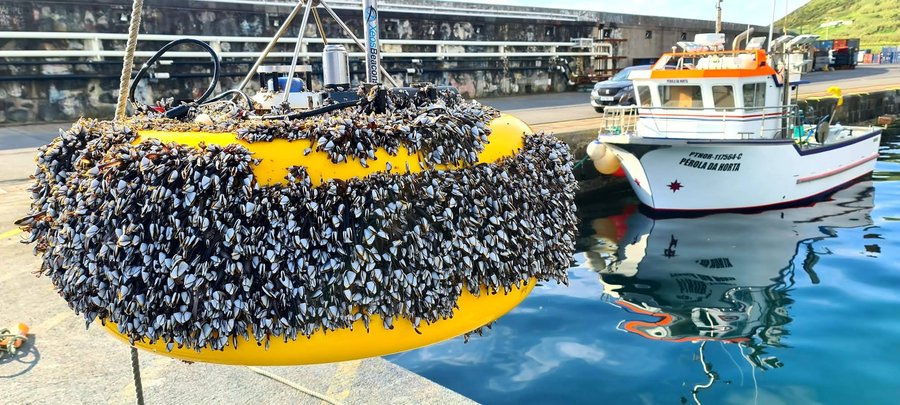
Recovered OBS AQU-0260 arrived at the pier in Horta, with the Pérola da Horta in the background.